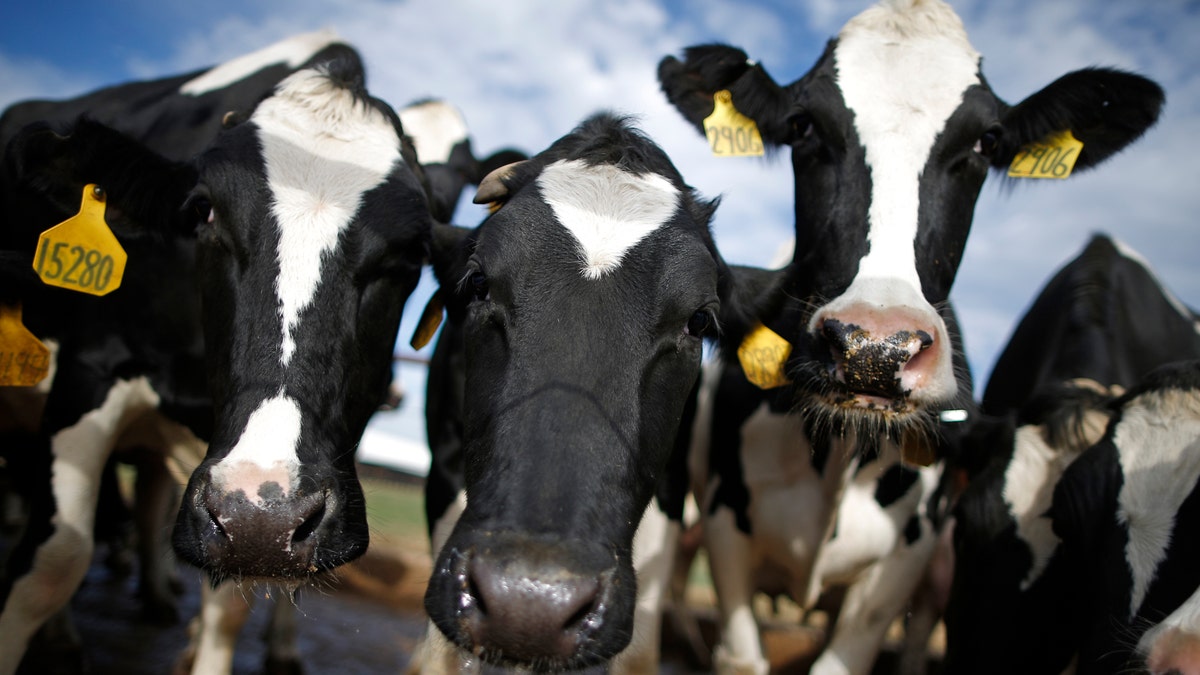
REUTERS/Jim Young
BOISE, Idaho (AP) -- The U.S. Department of Agriculture has refused to pay claims filed by two Idaho families who contend its pesticide treatment contaminated their crops and poisoned a cattle herd.
Instead, USDA told the families to file a lawsuit - a costly endeavor that could bankrupt the farms and risk the $70 million potato pest eradication program in Idaho.
The Potato Cyst Nematode (PCN) was discovered in 2006, threatening Idaho's $900 million potato industry. The next year, the USDA began treating infected fields with methyl bromide. The treatment reduced the pest, but it was stopped in 2014 because of concerns from a grower, said Brian Marschman, State Plant Health Director for APHIS, a branch of USDA.
Among those concerns were cattle with oozing lesions and spontaneously aborted calves, according to Idaho State Department of Agriculture documents obtained by The Associated Press.
The Eldredge-Kelley family, one of the farming operations near Shelley that filed the claim, declined to speak on the record with the AP. But in correspondence with the state Department of Agriculture, one family member called the experience a nightmare.
"We continue to deal with this emotionally, physically, and financially 100 percent on our own," Karen Eldredge wrote. "The only thing we have ever asked is a path forward."
Methyl bromide is a widely known but rarely used pesticide. Since 2005, its use has been restricted because of its role in destroying the ozone layer. It was also responsible for nearly killing a Delaware family in 2015, who inadvertently inhaled the neurotoxin while vacationing in the Virgin Islands.
Despite its potential to poison people and animals, the pesticide is still used for agricultural purposes, including on California strawberry fields and on crops coming into the state at port of entries. In Idaho, the pesticide has been used on 20 fields measured at over 3.4 square miles as part of the PCN eradication program.
Boise State University pesticide researcher Cynthia Curl says that most of the concern surrounding the pesticide is directed at people's exposure to the gas. Normally, when the pesticide is used in agriculture, it's not taken up into the fruit.
Marschman declined to comment on the tort claim, which was rejected March 3, citing pending litigation.
The Eldredge-Kelley fields were treated with methyl bromide between 2013 and 2014, according to information provided to the state Department of Agriculture. Over the next two years, cows on the farm experienced lesions and swelling from excess fluid after being fed hay grown on fields treated with methyl bromide.
Cows frequently aborted their calves or had stillbirths, while calves that were born alive struggled to nurse, stand and even breathe.
The family secured loans to keep the operation afloat and paid for veterinarian bills and treatments out of pocket before discovering the feed grown on the fields was poisoning the herd. In 2015, the family tested crops and cow tissue for inorganic bromide, a chemical derived from methyl bromide, according to the information given to the state agency.
Laboratory tests on the crops, cows and even the corral revealed extremely high levels of inorganic bromide.
About 2 miles away from the Eldredge-Kelley farm, Steve Christensen in Bingham County also found high levels of inorganic bromide in hay from treated fields. Christensen estimates that about 20 percent of his income was lost from the contaminated crops.
According to state documents, USDA officials told Idaho Ag Director Celia Gould that despite the testing showing excessive amounts of the toxin in crops and cows, they weren't convinced that methyl bromide made the cattle sick. USDA officials said that any problems would be the fault of the Environmental Protection Agency, which provided a methyl bromide risk assessment in 2010.
"There was egregious oversight in not fully studying or anticipating the potential for inorganic bromide residues for all commodities planted in treated fields," Gould noted in one document.
Curl, the Boise State researcher, is leading a team examining the pesticide's impact on crops.
"It's difficult I think to look at every scenario under the sun when you do this risk assessment," Curl said. "That isn't to say (the EPA) shouldn't have considered the scenario, but I think it may have been that perfect storm."
The families' claim amount is unknown. However, Idaho documents suggest that by September 2015, the contamination had cost both families a total of $450,000.
Both families are hesitant to file a lawsuit because they fear the cost.
"I have to put my faith in the system," Christensen told the AP. "I know there are many reasons not to. I am still hoping the right thing will happen, and I just have to hope that the people making the decisions in this will make the correct decisions and do the right thing."
Neither the hay nor cattle contaminated by methyl bromide in 2016 has gone to market in Idaho.
In fact, the two operations voided 2015 contracts to sell the hay. Currently, 2,000 tons of hay is sitting on the farms, while state officials figure out how to dispose of it.




















